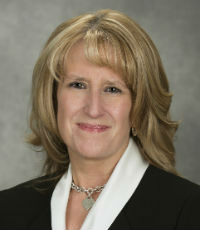TRENDING WHITEPAPERS,VIDEOS & MORE
Ask Brian: Creating a Networking Group
- Thursday, 18 April 2019
- Originating

Dear Brian,
I love your column and you seem to be very knowledgeable and sincere. I have only been originating for a few years and it’s hard for me to network. I am considering joining a networking group and wanted your opinion.
Scott J.
Boston
Dear Scott,
I know as a reader you may find this strange, but I have to tell you that honestly, I am very shy and basically an introvert. Hard to believe but it’s true.
Honestly, I dislike networking, but of course, we all have to do it. But I particularly dislike the big well-known networking groups and feel they are a total waste of time.
They are made up of many different industries and those members are unlikely to ever be able to refer business on a consistent basis.
[adbutler zone_id="326314"]
[adbutler zone_id="326316"]
The Key Word Is Consistent
Do you really think the copier sales person will be able to refer you a lead for a purchase or refinance regularly? For that matter, how many leads for copiers, do you think you can refer to him or her?
Yes, the accountant can and maybe the realtor can too, but there is no guarantee they will refer you.
That’s why I prefer much more targeted and smaller network group and opportunities.
As an example, one of the niches I target are buyers going through a divorce. So, I have created my own networking group dedicated to just this niche, including the following professionals:
-Mediator
-Divorce attorney
-Financial planner
-Therapist
-Realtor
-Accountant
-Myself
It’s a nice small targeted and focused group, and we are able to update ourselves on any new changes related to divorce in any of our respective practices.
We can easily refer each other because of our single focus on divorce.
Scott,
If you want to network you may be better off starting your very own focused group, a group where you can select the participants with a single focus and purpose.
Send me an email and let me know how that works out for you.
Dedicated to increasing your production.
Brian Sacks
About the Author: Brian Sacks is the author of 48 Proven Ways To Immediately Grow Your Production If you have a question you would like me to answer, send it to This email address is being protected from spambots. You need JavaScript enabled to view it. with the subject Ask Brian Question
Read more...March Sales Signal Slowest Start to Spring Homebuying Since 2014
- Tuesday, 16 April 2019
- Originating

 Kicking off the spring homebuying season, March sales climbed almost 29% over February, according to the RE/MAX National Housing Report. But this remains the slowest start in five years, with March sales 8.6% lower than March 2018.
Kicking off the spring homebuying season, March sales climbed almost 29% over February, according to the RE/MAX National Housing Report. But this remains the slowest start in five years, with March sales 8.6% lower than March 2018.
March was the eighth consecutive month of year-over-year sales declines and the sixth straight month of year-over-year inventory growth, with a 5.3% gain. Housing activity in the report's 54 markets nationwide also saw the Median Sales price grow by 3.4% year-over-year – notably smaller than the year-over-year increases in February (5.5%) and January (4.6%). However, the median sales price has risen by more than 3% year-over-year in 17 of the last 18 months.
From 2015 to 2018, the housing market's spring sprang to life with an increase in sales from February to March averaging 37.0%. March 2019's month-over-month increase of 28.8% was the smallest since 24.6% in 2014.
Days on Market increased to 59 from 57 last March, while Months Supply of Inventory declined year-over-year to 2.7 from 3.0.
"It was encouraging to see month-over-month sales improve during March," said RE/MAX CEO Adam Contos. "Although the seasonal bounce that typically ends the first quarter wasn't as strong as in the past few years, conditions are in place for a healthy spring selling season. Falling interest rates, rising inventory and moderating price increases against the backdrop of a healthy overall economy are cause for optimism for buyers and sellers alike."
Closed Transactions
Of the 54 metro areas surveyed in March 2019, the overall average number of home sales is up 28.8% compared to February 2019, and down 8.6% compared to March 2018. Leading the month-over-month sales percentage increase were Burlington, VT, at +48.3%, Wichita, KS, at +46.8%, and San Francisco, CA, at +44.3%.
Median Sales Price – Median of 54 metro median prices
In March 2019, the median of all 54 metro Median Sales Prices was $246,000, up 2.5% from February 2019, and up 3.4% from March 2018. Two metro areas saw a year-over-year decrease in Median Sales Price: San Francisco, CA, at -3.8% and Hartford, CT, at -1.4%. Three metro areas increased year-over-year by double-digit percentages – Manchester, NH, at +12.2%, Omaha, NE, at +11.8%, and Wichita, KS, at +10.7%.
Days on Market – Average of 54 metro areas
The average Days on Market for homes sold in March 2019 was 59, down three days from the average in February 2019, and up two days from the March 2018 average. The metro areas with the lowest Days on Market were Omaha, NE, and San Francisco, CA, both at 31, and Denver, CO, at 35. The highest Days on Market averages were in Augusta, ME, at 122, and Burlington, VT, and Hartford, CT, both at 97. Days on Market is the number of days between when a home is first listed in an MLS and a sales contract is signed.
Months Supply of Inventory – Average of 54 metro areas
The number of homes for sale in March 2019 was up 0.3% from February 2019 and up 5.3% from March 2018. Based on the rate of home sales in March 2019, the Months Supply of Inventory decreased to 2.7 from 3.7 in February 2019, and from 3.0 in March 2018. A six-months supply indicates a market balanced equally between buyers and sellers. In March 2019, of the 54 metro areas surveyed, only Miami, FL, at 6.5 reported a supply at or over six months, which is typically considered a buyer's market. The markets with the lowest Months Supply of Inventory were Denver, CO, at 1.2, and four metros at 1.3 – San Francisco, CA, Seattle, WA, Boise, ID, and Manchester, NH.
Read more...Recent PwC Survey Show Consumer Attitudes are Changing
- Friday, 12 April 2019
- Originating


PWC’s April survey shows that consumer attitudes are changing. They see what digitalization is doing in other areas and they want a similar experience in the mortgage space. Consequently, they are not just looking for a best in class home searching experience or an amazing digital mortgage experience, they’re demanding an integrated home ownership experience. Instead of a series of different specialists ( i.e. realtor, mortgage originator, financial planner ) they prefer one – a solution that integrates all the components from searching and financing through living and upgrading. What this means is that some of the most appealing opportunities for growth for mortgage companies might be in providing value throughout the home ownership experience.
The study showed that 58% of homebuyers seek advice from lenders as the first step as they begin to plan and budget. This is an opportunity for the lender to become a trusted advisor and craft and early, positive relationship that can outline the whole buying process, educating the consumer on what comes next and establish realistic and all-inclusive cost expectations. Other key educational opportunities lie in offering holistic financial literacy and bridging the gap from renter to homeowner. The guidance should stop at the closing, however. The study indicates that 44% of home buyers – and up to 63% of millennials – have some regrets about their purchase decision. By communicating the long -term cost of home ownership lenders might reduce the level of buyer’s remorse and build a loyal customer base more likely to drive repeat business.
Lenders that can offer guidance from home search through home purchase may differentiate themselves. To do this effectively you have to understand the individual buyer motivations, after all they can vary considerably, to understand what they want out of their more integrated experience.
42% of responders to the survey indicated they were potential supporters of tech companies getting into the mortgage business. This means that technology companies should now be considered potential competitors. Existing mortgage companies have an advantage though, their existing expertise and their customer data. By utilizing their own as well as third party data and then using predictive analytics they can be first in line when the next borrower need arises. To succeed lenders will have to know much more about who their customers are and what they are comfortable with, both today and in the future.
The Price Waterhouse survey also underscored how useful a personal touch can be, another advantage lenders might have over technology companies. Of those who received a follow up call after closing 52% noted they would be likely to use the same lender again. In contrast, of those who didn’t get a call 23% indicated they would be very unlikely to use the same lender. While this call could be of a congratulatory nature, it should also include set up assistance and education about mortgage payments.
Digital tools, like using a voice assistant, is an example of a technology that buyers are open to using. Digital channels aren’t always the preferred methods though and as the buyer moves through the buying process, they tend to more toward more traditional communications channels such as the phone or in-person support. Knowing who you are serving and why is important to understand how and when to use technology tools to offer a better customer experience. To uncover this lenders should be analyzing their data. Making decisions that are evidence based rather than intuitive based can uncover new opportunities and reduce customer churn by helping to determine the things that customers value most. Arming your sales team with this information allows them to deliver personalized products and advice that create a better customer experience.
As customers move to thinking of lenders as a source of education and financial freedom lenders should look to shape their strategy accordingly. How they invest in technology and the products they offer should reinforce the capabilities that make them the best at what they do and help them step away from those functions that won’t make them unique. It might also shape their product mix. Perhaps there will be a move to expanding the product base to include financial products for all phases of life – first mortgage to get in the home, refinance to lower the cost, home improvement to fix up the house, HELOC’s to help pay for college, reverses mortgages to assist in retirement.
Read more...
Shifting Lending Strategies in a Changing Market
- Thursday, 11 April 2019
- Originating


One thing that was evident at this weeks’ New Jersey Mortgage Bankers Regional Conference in Atlantic City was that the industry pivot into non-QM lending continues. As business owners, lenders have to make strategic decisions such as are they going to cut their price, are they going to open up Non-QM or are they going to innovate?
Many companies have been cutting margin and getting into rate wars trying to buy the market. The rate wars have gotten so competitive that companies are just throwing in the white flag and getting out of the market or expanding into other niche areas such as Non-QM.
Other companies are going into Non-QM because they are trying to come up with programs so that they have something to speak about. It’s another way to show they are full service. Their reps have another tool in the toolbox and another reason to get in touch with borrowers.
According to Laura Brandao, President at AFR Inc, “Companies are under pressure to expand their programs to get business. Right now that is one of the biggest things people are doing. But where they missed the mark is that they actually should have been doing this a couple years ago. Many who are jumping in right now aren’t doing their homework to make sure they understand those programs. I wonder what the repercussions are going to be for some of these people as they run into unanticipated complexities and legal issues.”
“I’m a complete specialty lender. Over the course of the last 18 months there have been lanes drawn out in the wholesale market. This person is going after the high FICO, conventional lending lane. Then there’s a lane for someone like me, someone who does renovations, one-time close construction loans, manufactured homes. Then a lane for reverse. A lane for Non-QM. Then you have all these other people trying to grab the leftover bits and pieces of the lanes. As for our company strategy, I know that I can’t be everything to everybody, but I know I can be the best in my lane.”
To support her position as a leader in her lane her focus is on educating the brokers, correspondents and credit unions who do business with her. “I’m going to give you an education and I’m going to hold your hand and I’m going to make you an expert in all my products so that when you come across one of those loans, you’re going to think of me. Any type of renovation or construction loan. These are complicated programs and once my wholesale partners realize this, they also realize they don’t want to just go with any lender.”
The other trend that is taking hold is the comeback of the mortgage broker. Originators are moving away from retail and the big corporate structures and going independent. “In my company we used to be 60-40 correspondent to broker, I am now 70-30 broker” said Ms. Brandao. When Brokers Rallying Against Whole-Tail Lending (BRAWL) came out about two years ago it was the start of a movement. According to Brandao, who is a big supporter of the movement, the brokers came together and formed a community in which they shared information and felt that, as a team, they were stronger than their larger competitors. This group of people shared things like: How do I handle an audit? What technology should I use? How do I recruit new loan officers? They shared this information via social media groups and a Facebook page. Now they have ARIVE.
ARIVE is the new technology platform managed by the Association of Independent Mortgage Executives (AIME), the successor to BRAWL. This platform gives brokers access to a one stop technology for originators and helps level the playing field with larger lenders when it comes to technology. It also offers the ability to use one system to access multiple lenders, making the origination process smoother and easier. It also allows for more price transparency as wholesale lenders post pricing into one common platform for originators to view.
While the broker ranks have a long way to go to get back to pre-crisis levels, they are filling the origination wholes left as large retail banks left the mortgage industry. Empowered by a new sense of community and technological access not previously available to many they seem to be a bright spot in a very challenging market. As such, they might also become a larger part of lenders strategies.
Read more...




